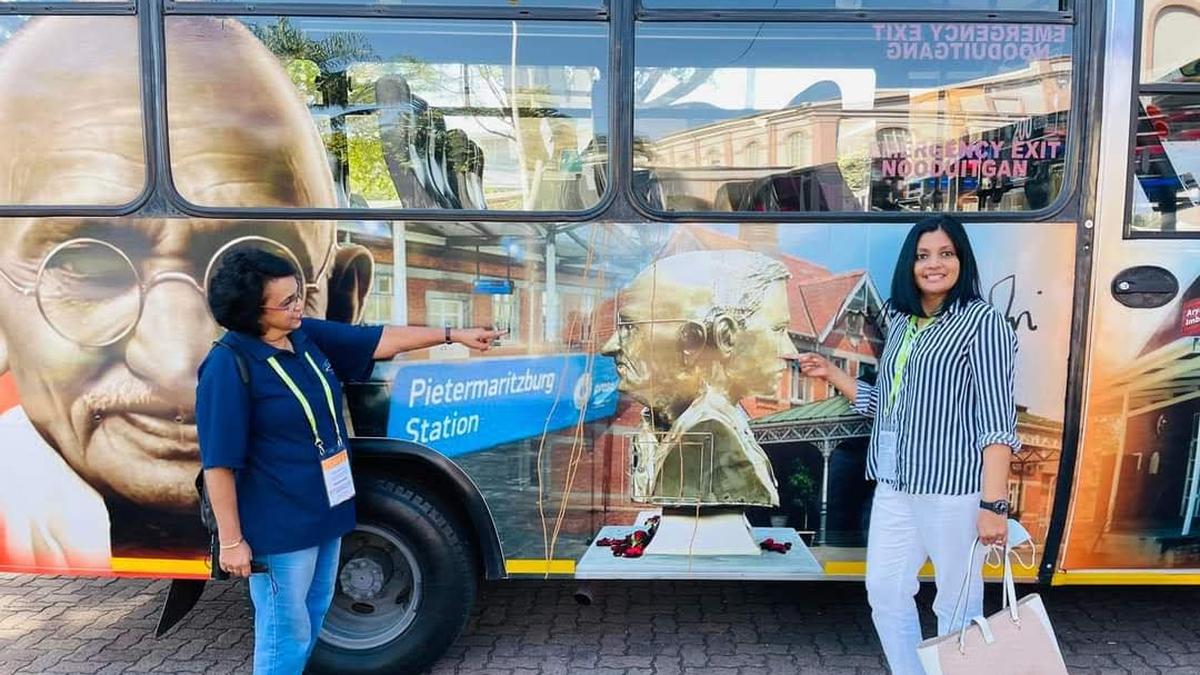
More Indians are exploring Mahatma Gandhi’s life in South Africa through curated tour packages
The Hindu
More Indians are exploring Mahatma Gandhi’s life in South Africa through curated tour packages
Keshav Gupta, a young social activist from New Delhi, had always wanted to visit Sarvodaya, the house where Mahatma Gandhi lived in Durban, South Africa. When he finally did last year, he was elated. “It felt inspiring to be at the Phoenix Settlement in KwaZulu-Natal where Gandhiji was based. It felt special to be in the house and to learn about his continuing influence in society,” says Gupta, who visited Durban again recently to attend a conference organised to commemorate the 130th anniversary of Gandhi’s removal from a first-class train compartment at Pietermaritzburg railway station on June 7, 1893.
More than a century after he left the country, Gandhi continues to inspire and influence the socio-political discourse in South Africa. There are museums dedicated to the Mahatma and special tours covering the places and institutions associated with his life. And increasingly, these are of interest to not just the average South African tourist but also to Indians from around the world. “Each year, around 800 Indians visit Constitution Hill, where Gandhi was jailed in 1906,” says Janine Levinia Muthusamy, marketing manager, Constitution Hill Museum.
The former prison and military fort has been converted into a museum showcasing the history of South Africa’s struggle for freedom and democracy. “The museum also offers a Mandela-Gandhi exhibition,” says Muthusamy.
From January to March this year, about 16,000 tourists from India visited South Africa, says the country’s tourism minister Patricia de Lille. There are itineraries catering exclusively to Indians interested in the Gandhi experience. For instance, the six-night ‘Explore Gandhi’ tour package, which starts at ₹5 lakh, includes vegetarian meals and a two-night stay each in Johannesburg, Pietermaritzburg and Durban. “Visitors can also experience the Gandhi-Mandela tour at Pietermaritzburg in a special coach,” says Bunny Bhoola, deputy chair of Pietermaritzburg Gandhi Foundation. A visit to Tolstoy Farm in Johannesburg, a safari and tour of Sun City to learn about traditional village life in KwaZulu Natal are also part of the package.
Last week, a group of 15 tourists from Mumbai left for Durban on a Gandhi tour. Last year, 53 Indians had taken the same tour. “There’s a continuing interest among Indians, especially middle-aged people, to know more about Gandhi’s life in South Africa,” says Syed M. Mujeeb, General Manager of Aerowings Travel and Cargo Agency, Hyderabad, which organises the Gandhi tours. “They are keen to visit the Gandhi ashrams and prisons where his wife Kasturba and he were imprisoned,” he adds.
Recently, in India, Prime Minister Modi drew ire from several quarters when he said in an interview that Gandhi became known globally only after the release of Attenborough’s 1982 film. Political leaders and critics were quick to point to the hordes of global personalities who drew inspiration from the Mahatma in his lifetime. “Several leaders, including Nelson Mandela and Martin Luther King, have acknowledged the influence of Gandhiji on the social movements in their countries,” says Ela Gandhi, his granddaughter and former South African politician. “The Gandhian way of non-violent agitations left a deep impact on the American civil rights movement led by King in the 1960s. Various leaders of the African National Congress too acknowledged the influence of Gandhian ideals in their freedom struggle.”
Opinions may vary depending on which side of the political spectrum one belongs to, but for the average Indian tourist, Gandhi occupies pride of place in the history of the nation. “During my visit to Durban, I had the opportunity to meet Ela Gandhi, and she showed me some of her childhood photographs with Gandhiji,” says Keshav Gupta. It was a memorable moment and possibly the highlight of the trip.











